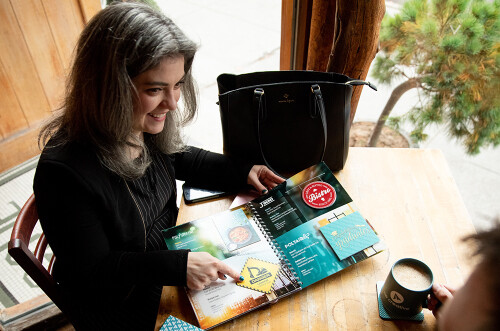Let's work together to tell your storyto build your brandto drink more coffee
We'd love to get to know you.
CW Print + Design is now CW Creative! Learn More
When he began singing American rock songs with his friend’s band as a teenager, not in his wildest imaginations did Arnel Pineda see himself fronting for the world-famous rock band, Journey.
For years, his exceptional talent for singing had been more than enough to belt out songs in club bands, parties, special events, contests, weddings, and performances around the Philippines, which was Pineda’s home country. However, things got exciting when he was filmed doing his performance of a particular Journey song, “Don’t Stop Believin’”. The performance, as well as Pineda’s ability to sing the song so similarly to how the original version was sung by the original Journey frontman, Steve Perry, was breathtaking. It also shocked guitarist and original member of Journey, Neil Schon, when he watched the performance on YouTube as well.
One would think the fairy tale ends at this point as Pineda rockets to fame as Journey’s replacement singer. But, that’s not exactly how the story goes.

Upping Your Game
Pineda could sing, no doubt, and he did a darn good version of Journey as a bar singer. However, once he met the band, they made it clear to Pineda that if he were to be considered a serious contender for the real band, he would have to up his game to a higher level than where it was. He was required to sing all the original Journey songs to perfection.
Achieving this is harder than most people would imagine. Pineda had to train himself to match every tone, every inflection that Steve Perry had done to make Journey’s song memorable once they were released. Unlike Perry, who had creative freedom and could use any voice he liked, Pineda had to duplicate the original to every single detail.
It was a grueling process. Schon and co, made it a point to catch every mistake and pushed Pineda to the apex of his singing ability. Plenty of times the young Filipino thought of quitting and questioned his talent. But, fortunately, he stuck it out to the end, realized his full potential and succeeded.
Success Can Be Hard to Repeat
Pineda’s story is a classic example of how hard it is to achieve or reach success a second time, once a certain standard has been set after the first time.
In business, a one-time success is nothing more than a blip, one that is most likely not going to be easy to replicate. Once a business team can repeat top performance and do so regularly that should be considered an achievement. It shows that whatever success was achieved was not just good luck or a brief alignment of the stars and circumstances.
Repeat success is the primary goal every business team strives towards. And what makes it so difficult to attain is that conditions change, markets fluctuate, customers change interests, team members leave, and so on. All these factors affect how successful a business team can be.
Not Just for Entertainment
Stories like Pineda’s are not confined only to the realm of entertainment. Look at the case of Apple when Steve Jobs passed away, for example. Apple lost a key resource in Jobs and still had to rise to the occasion to find a way to keep the company growing and succeeding even more than what Jobs had achieved while he was at the company. CEO, Tim Cook, and his team have done just that, but it has been a huge challenge to fill Job’s shoes year after year since he passed away. Cook has had to work just as hard as Pineda to replicate the success and make it better.
So the next time you run across a repeat success story, don’t be so quick to dismiss it. It is significantly harder to succeed a second time than it is the first time.
Table of Contents
We'd love to get to know you.

